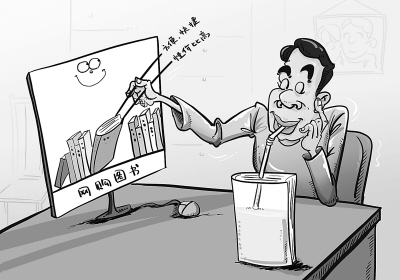In 2010, the number of B2C book purchasers in China reached 22.06 million, accounting for 32.4% of total B2C purchasers. Books were one of the earliest goods sold online in China. In 2010, there was another sales boom in B2C book purchasing. Dangdang began its e-book market, and 360buy opened its book category. The competition between major B2C websites stimulated the development and expansion of B2C purchasers.
Chinese consumption
According to statistics from the CNNIC, the average annual spending on B2C books and audio-video products in China is 367 yuan per person, a relatively small number. 35% of all consumers spend less than 100 yuan per year on B2C books and audio-video products. Those who spend 101 to 300 yuan are the most common, making up 35.5% of the total. Those who spend 301 to 500 yuan make up 14.8%. Those who spend 501 to 1,000 yuan are 8.7% of the total and remaining 6.1% spend more than 1,000 yuan.
Surprisingly, Tmall, the leading online B2C retailer in other categories like clothes, does not dominate in this market. Instead, it is Dangdang that has the largest market share—36.5%. Amazon follows with 19.8%, then Tmall, with 11.6%. QQshop has only 0.8%, and 99read and China-pub each have only 0.3%.
The average annual consumption on Dangdang of B2C book purchasers is 332 yuan. Next is Tmall with 271 yuan. Third is Amazon with 263 yuan. Following is 99read, with average annual spending of 173 yuan. QQshop has the smallest annual spending, 114 yuan.
Chinese e-book consumers
Compared with other products like maternal and child supplies, B2C book purchasers buy the same type of products from more websites. Only 85% of purchasers only buy from one website. 14% buy from two websites, and 1% buy from three websites or more.
According to statistics on relevant purchasing, clothing, 3C products and cosmetics are the top three other products that B2C book purchasers buy. 33.4% of B2C book purchasers have bought clothes and shoes on B2C websites. 22.2% of B2C book purchasers have bought computers and digital products or their spare parts, and 11.7% have bought cosmetics. Those who have bought groceries, household electrical appliances, and virtual cards are, respectively, 10.7%, 10.4% and 10.2% of all B2C book purchasers.
It is apparent from the statistics that females are more frequent B2C book purchasers. 56.4% B2C book purchasers are females. The age distribution of B2C book purchasers is similar to the overall distribution of B2C purchasers, but it is more even. Teenagers make up 6.4% of B2C book purchasers, a percentage higher than the 3.8% for overall B2C purchasers.
Generally speaking, B2C book purchasers tend to be highly educated. 83.1% of these purchasers have received a college or university degree. Only 16.9% have received high school education or lower.
Students are active B2C book purchasers with a percentage of 23.7% in the total B2C book purchaser population. White collar office workers make up 34.2% of the total, and government workers make up 15.5%. The rest are either small business owners or unemployed.
Daxue Consultant China
Sources:
Credit Photo: CCMedu





